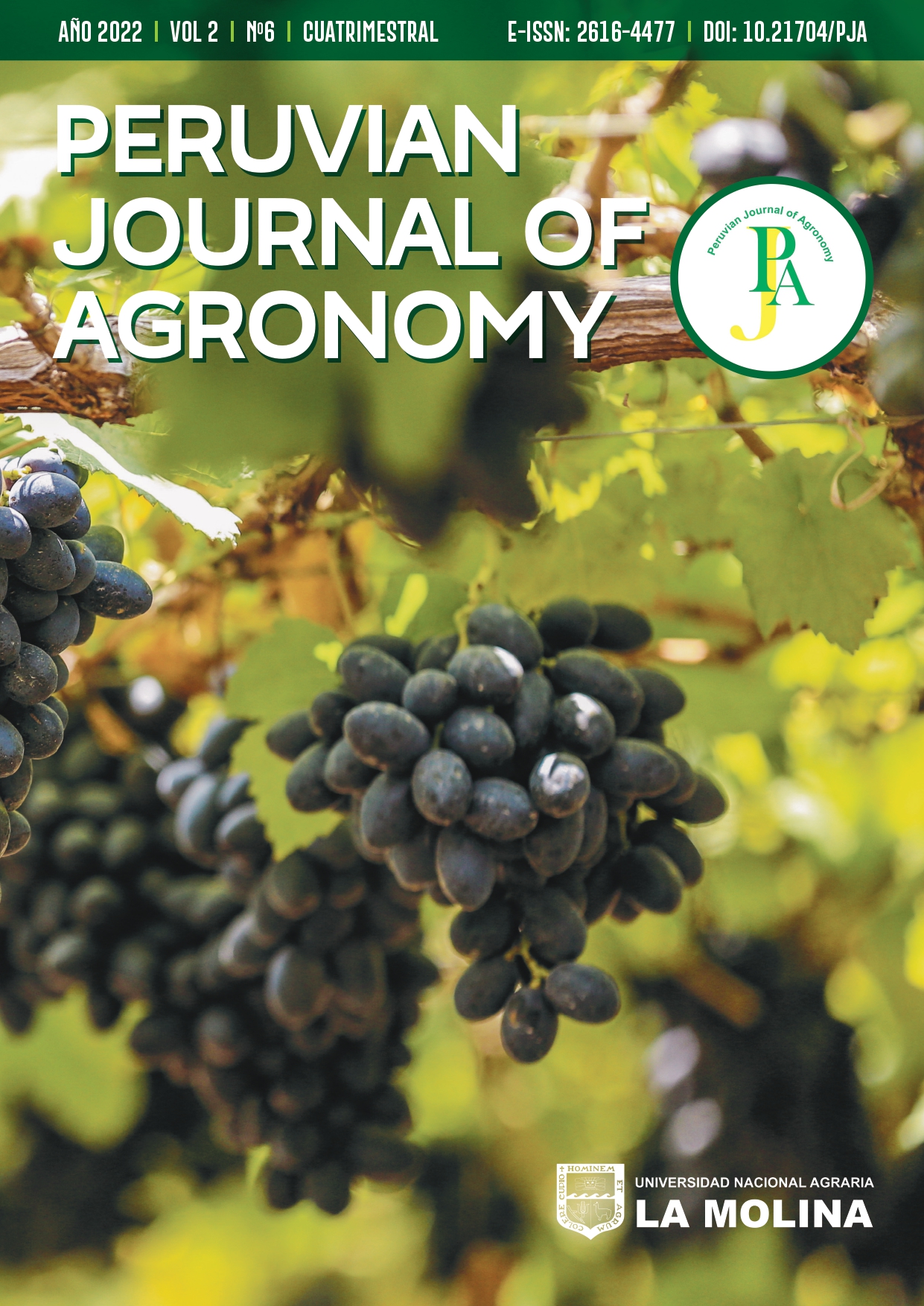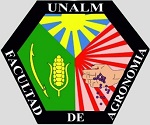Impact of two tillage practices on selected soil properties, growth and yield of maize on an ultisol
DOI:
https://doi.org/10.21704/pja.v6i2.1933Keywords:
Conventional tillage, Maize crop, plow, harrowed, ultisolAbstract
This study investigated the effect of two tillage practices on maize yield and growth, and selected soil properties of an Ultisol of Osun State in Nigeria. This was aimed at selecting an appropriate tillage practice for crop growth and soil maintenance. The study was divided into two experimental plots during the early and late cropping season in 2014. The first plot was manually cleared to have zero tillage while the second plot was plowed twice and harrowed once for conventional tillage. Each plot had three blocks (23.0 m x 2.5 m) with an alley of 1.0 m between blocks and 1.0 m within plots. Three seeds of the test crop were a distance of 75 cm x 50 cm per hill and each plot weeded manually at two weeks intervals till harvest. The selected soil physical and chemical properties and plant growth parameters were collected and determined using standard method after each cropping season. At the end of the experiment zero tillage, had the highest plant height and soil values compared to conventional tillage. Zero tillage also had higher soil chemical values when compared to conventional tillage. The grain yield showed a significant difference between the tillage practices. Zero tillage had a higher yield (1.71 t/ha) when compared with conventional tillage (0.97 t/ha). The study concluded that zero tillage was a better alternative for crop growth and soil maintenance of an Ultisol.
Downloads
References
Alam, Md. K., Islam, Md. M., Salahin, N., & Hasanuzzaman, M. (2014). Effect of Tillage Practices on Soil Properties and Crop Productivity in Wheat-Mungbean-Rice Cropping System under Subtropical Climatic Conditions. The Scientific World Journal, 2014, 1–15. https://doi.org/10.1155/2014/437283
Adedokun, A. S., Ogunyemi, O. I., & Lawal, B. A. (2018). Sustainable Agricultural Practices And Arable Farmers Productivity In Lagos State, Nigeria. Journal Of Sustainable Development In Africa, 20(2), 11–21.
Aikins, S., Afuakwa, J., & Owusu-Akuoko, O. (2012). Effect of Four Different Tillage Practices on Maize Performance under Rainfed Conditions. Agriculture and Biology Journal of North America, 3(1), 25–30. https://doi.org/10.5251/abjna.2012.3.1.25.30
Ali, A., Usman, M., & Adaikwu, A. O. (2018). Effect of Tillage Methods on Soil Properties, Growth and Yield of Maize (Zea mays L.) in Makurdi, Nigeria. International Journal of Science and Healthcare Research, 1, 8–6.
Basamba, T. A., Amézquita, E., Singh, B. R., & Rao, I. M. (2006). Effects of Tillage Systems on Soil Physical Properties, Root Distribution and Maize Yield on Colombian Acid-Savanna Oxisol. Acta Agriculturae Scandinavica, Section B - Plant Soil Science, 56(4), 255–262. https://doi.org/10.1080/09064710500297690
Bouyoucos, G. H. (1951). A Recalibration of the Hydrometer Method for Making the Mechanical Analysis. Agronomy Journal, 43, 434–438.
Cookson, W. R., Murphy, D. V., & Roper, M. M. (2008). Characterizing the relationships between soil organic matter components and microbial function and composition along a tillage disturbance gradient. Soil Biology and Biochemistry, 40(3), 763–777. https://doi.org/10.1016/j.soilbio.2007.10.011
Cooper, H. V., Sjögersten, S., Lark, R. M., Girkin, N. T., Vane, C. H., Calonego, J. C., & Mooney, S. J. (2021). Long‐term zero‐tillage enhances the protection of soil carbon in tropical agriculture. European Journal of Soil Science, 2021, 1–16. https://doi.org/10.1111/ejss.13111
Crittenden, S. J., Poot, N., Heinen, M., van Balen, D. J. M., & Pulleman, M. M. (2015). Soil physical quality in contrasting tillage systems in organic and conventional farming. Soil and Tillage Research, 154, 136–144. https://doi.org/10.1016/j.still.2015.06.018
Dorneles, E. P., Lisboa, B. B., Abichequer, A. D., Bissani, C. A., Meurer, E. J., & Vargas, L. K. (2015). Tillage, fertilization systems and chemical attributes of a Paleudult. Scientia Agricola, 72(2), 175–186. https://doi.org/10.1590/0103-9016-2013-0425
FAOSTAT. (2017). Available from: http://www.fao.org/faostat/en/#data/QC
Guan, D., Zhang, Y., Al-Kaisi, M. M., Wang, Q., Zhang, M., & Li, Z. (2015). Tillage practices effect on root distribution and water use efficiency of winter wheat under rain-fed condition in the North China Plain. Soil and Tillage Research, 146, 286–295. https://doi.org/10.1016/j.still.2014.09.016
Haddaway, N. R., Hedlund, K., Jackson, L. E., Kätterer, T., Lugato, E., Thomsen, I. K & Isberg, P. E. (2017). How does tillage intensity affect soil organic carbon? A systematic review. Environmental Evidence, 6(1), 30. https://doi.org/10.1186/s13750-017-0108-9
Hamza, M. A., & Anderson, W. K. (2005). Soil compaction in cropping systems. Soil and Tillage Research, 82(2), 121–145. https://doi.org/10.1016/j.still.2004.08.009
Lal, R. (1997). Long-term tillage and maize monoculture effects on a tropical Alfisol in western Nigeria. I. Crop yield and soil physical properties. Soil chemical properties. Soil and Tillage Research, 42(3), 161–174. https://doi.org/10.1016/S0167-1987(97)00006-8
Mathew, R. P., Feng, Y., Githinji, L., Ankumah, R., & Balkcom, K. S. (2012). Impact of No-Tillage and Conventional Tillage Systems on Soil Microbial Communities. Applied and Environmental Soil Science, 2012, 1–10. https://doi.org/10.1155/2012/548620
Mohanty, M., Painuli, D., Misra, A., & Ghosh, P. (2007). Soil quality effects of tillage and residue under rice–wheat cropping on a Vertisol in India. Soil and Tillage Research, 92(1–2), 243–250. https://doi.org/10.1016/j.still.2006.03.005
Omeke, J. O. (2017). Effect of tillage, rhizobium inoculation in maize-soybean based cropping systems and nitrogen fertilizer application on chemical fertility status of savanna Alfisol, Nigeria. Agro-Science, 15(3), 1–18. https://doi.org/10.4314/as.v15i3.4
Osunbitan, J. A., Oyedele, D. J., & Adekalu, K. O. (2005). Tillage effects on bulk density, hydraulic conductivity and strength of a loamy sand soil in southwestern Nigeria. Soil and Tillage Research, 82(1), 57–64. https://doi.org/10.1016/j.still.2004.05.007
Ram, H., Singh, R. K., Pal, G., Agarwal, D. K., & Kumar, R. (2018). Effect of tillage practices and genotypes on growth, seed yield and nutrient uptake in wheat (Triticum aestivum). Indian Journal of Agricultural Sciences, 88(11), 1765–1769.
Rasmussen, K. J. (1999). Impact of ploughless soil tillage on yield and soil quality: A Scandinavian review. Soil and Tillage Research, 53(1), 3–14. https://doi.org/10.1016/S0167-1987(99)00072-0
Rouf Shah, T., Prasad, K., & Kumar, P. (2016). Maize-A potential source of human nutrition and health: A review. Cogent Food and Agriculture, 2(1), 1166995. https://doi.org/10.1080/23311932.2016.1166995
Santpoort, R. (2020). The Drivers of Maize Area Expansion in Sub-Saharan Africa. How Policies to Boost Maize Production Overlook the Interests of Smallholder Farmers. Land, 9(3), 68. https://doi.org/10.3390/land9030068
Singh, G., Bhattacharyya, R., Das, T. K., Sharma, A. R., Ghosh, A., Das, S., & Jha, P. (2018). Crop rotation and residue management effects on soil enzyme activities, glomalin and aggregate stability under zero tillage in the Indo-Gangetic Plains. Soil and Tillage Research, 184, 291–300. https://doi.org/10.1016/j.still.2018.08.006
Soane, B. D., Ball, B. C., Arvidsson, J., Basch, G., Moreno, F., & Roger-Estrade, J. (2012). No-till in northern, western and south-western Europe: A review of problems and opportunities for crop production and the environment. Soil and Tillage Research, 118, 66–87. https://doi.org/10.1016/j.still.2011.10.015
Tarkalson, D. D., Hergert, G. W., & Cassman, K. G. (2006). Long-Term Effects of Tillage on Soil Chemical Properties and Grain Yields of a Dryland Winter Wheat-Sorghum/Corn-Fallow Rotation in the Great Plains. Agronomy Journal, 98(1), 26–33. https://doi.org/10.2134/agronj2004.0240
Thomas, G., Dalal, R., & Standley, J. (2007). No-till effects on organic matter, pH, cation exchange capacity and nutrient distribution in a Luvisol in the semi-arid subtropics. Soil and Tillage Research, 94(2), 295–304. https://doi.org/10.1016/j.still.2006.08.005
Walkley, A., & Black, I. A. (1934). An examination of the Degtjareff method for determining soil organic matter and a proposed modification of the chromic acid titration method. Soil Science, 37, 29–38.
Downloads
Published
Issue
Section
License
Copyright (c) 2022 Oluwatosin Komolafe

This work is licensed under a Creative Commons Attribution 4.0 International License.







